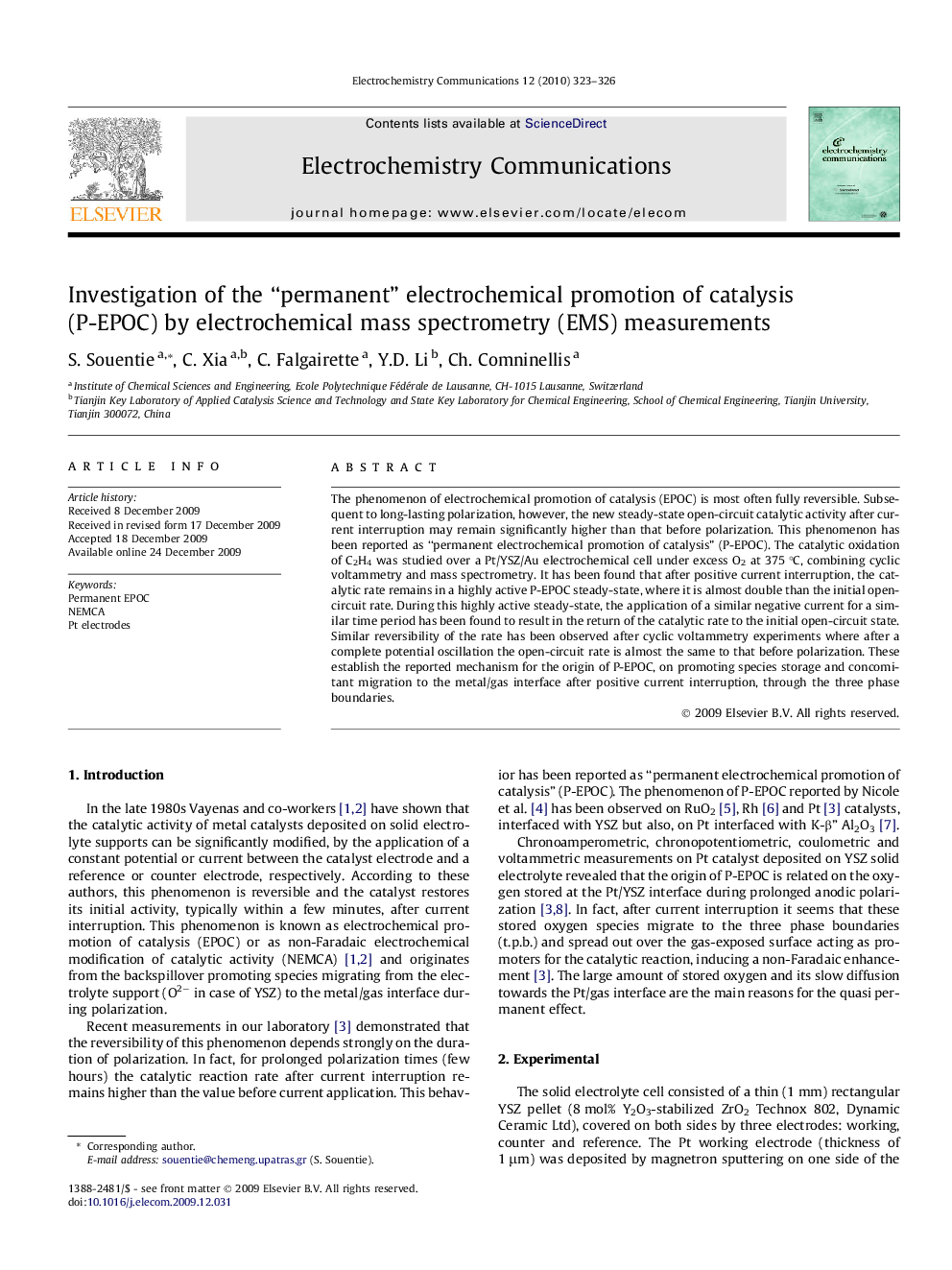| Article ID | Journal | Published Year | Pages | File Type |
|---|---|---|---|---|
| 180740 | Electrochemistry Communications | 2010 | 4 Pages |
The phenomenon of electrochemical promotion of catalysis (EPOC) is most often fully reversible. Subsequent to long-lasting polarization, however, the new steady-state open-circuit catalytic activity after current interruption may remain significantly higher than that before polarization. This phenomenon has been reported as “permanent electrochemical promotion of catalysis” (P-EPOC). The catalytic oxidation of C2H4 was studied over a Pt/YSZ/Au electrochemical cell under excess O2 at 375 °C, combining cyclic voltammetry and mass spectrometry. It has been found that after positive current interruption, the catalytic rate remains in a highly active P-EPOC steady-state, where it is almost double than the initial open-circuit rate. During this highly active steady-state, the application of a similar negative current for a similar time period has been found to result in the return of the catalytic rate to the initial open-circuit state. Similar reversibility of the rate has been observed after cyclic voltammetry experiments where after a complete potential oscillation the open-circuit rate is almost the same to that before polarization. These establish the reported mechanism for the origin of P-EPOC, on promoting species storage and concomitant migration to the metal/gas interface after positive current interruption, through the three phase boundaries.
